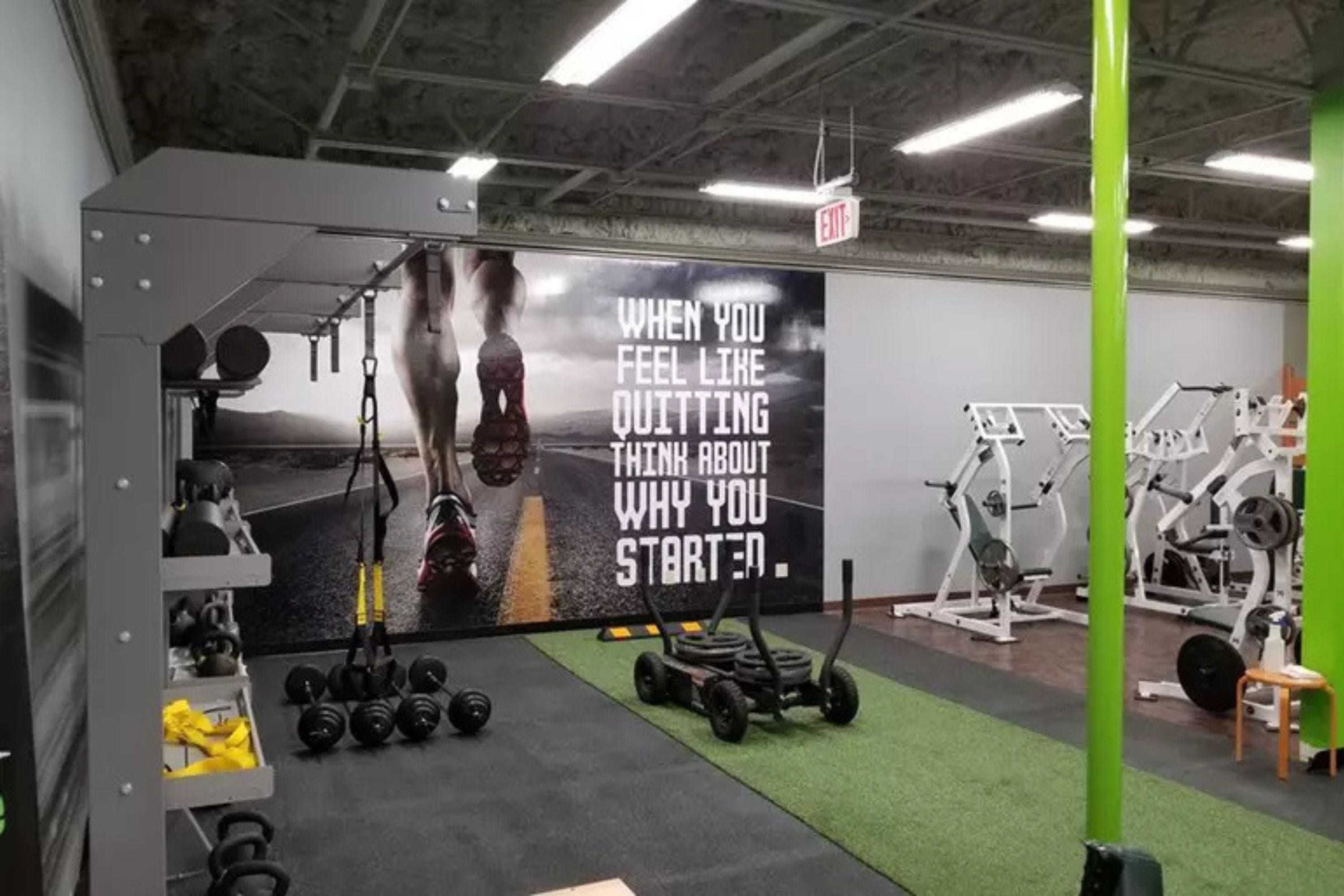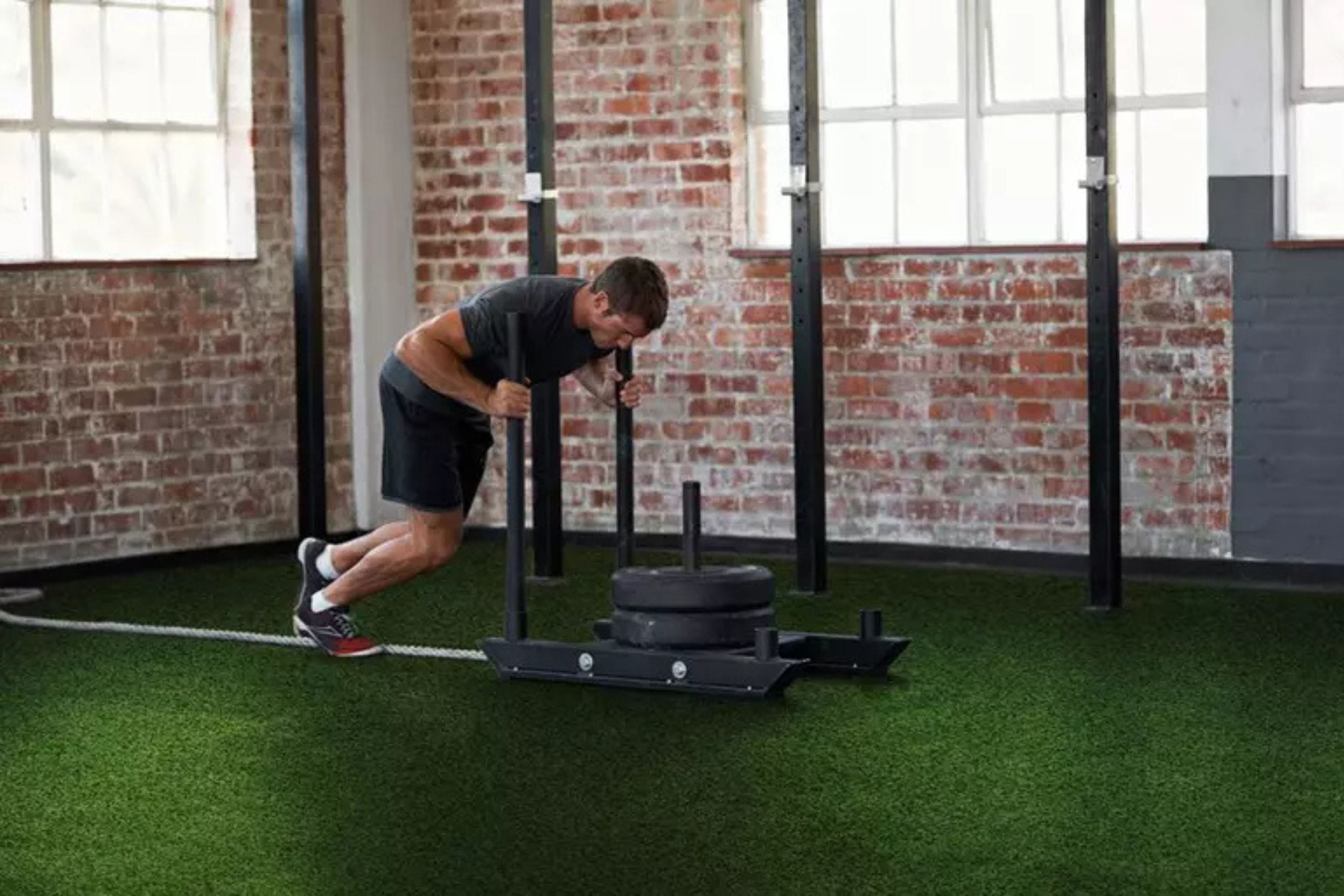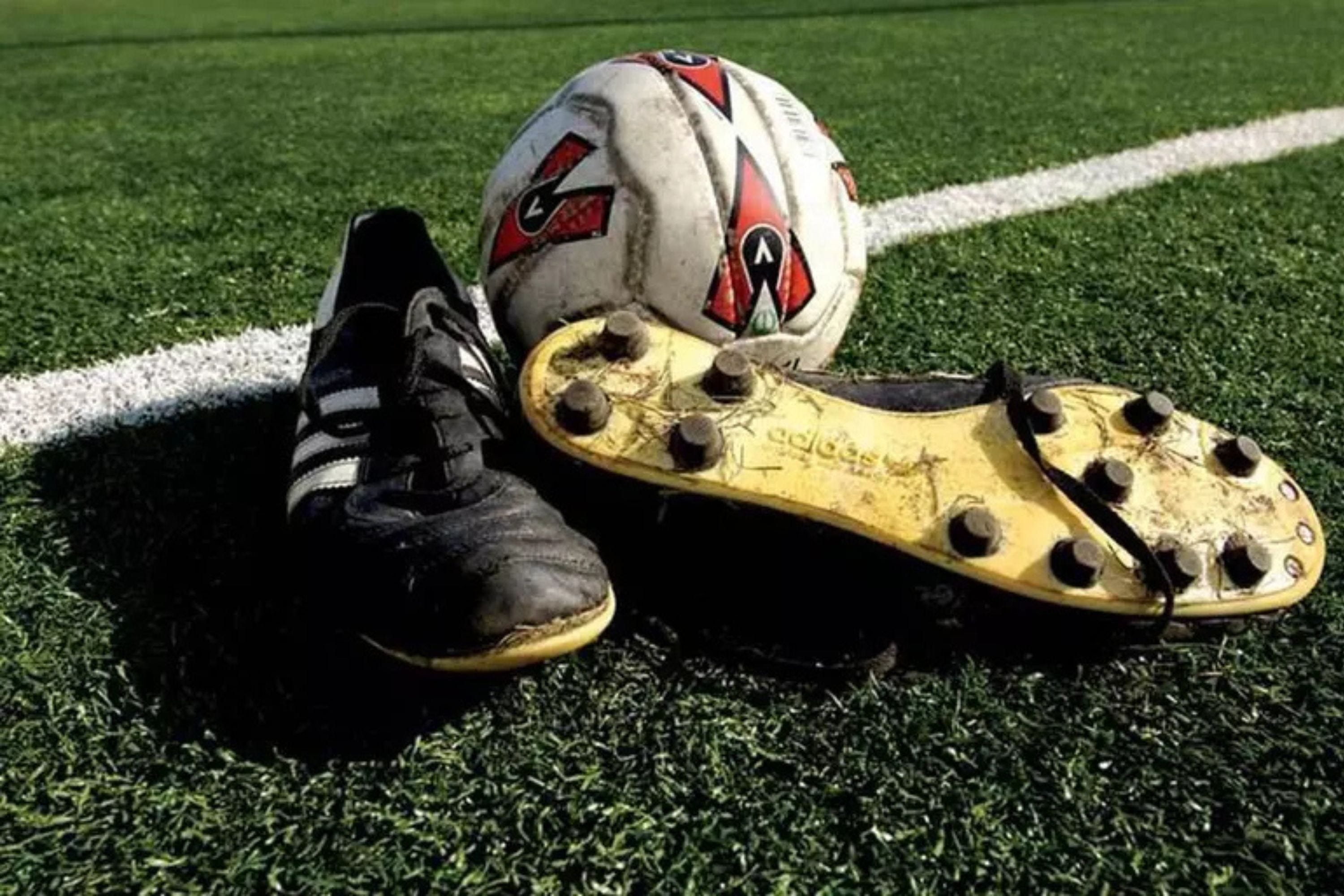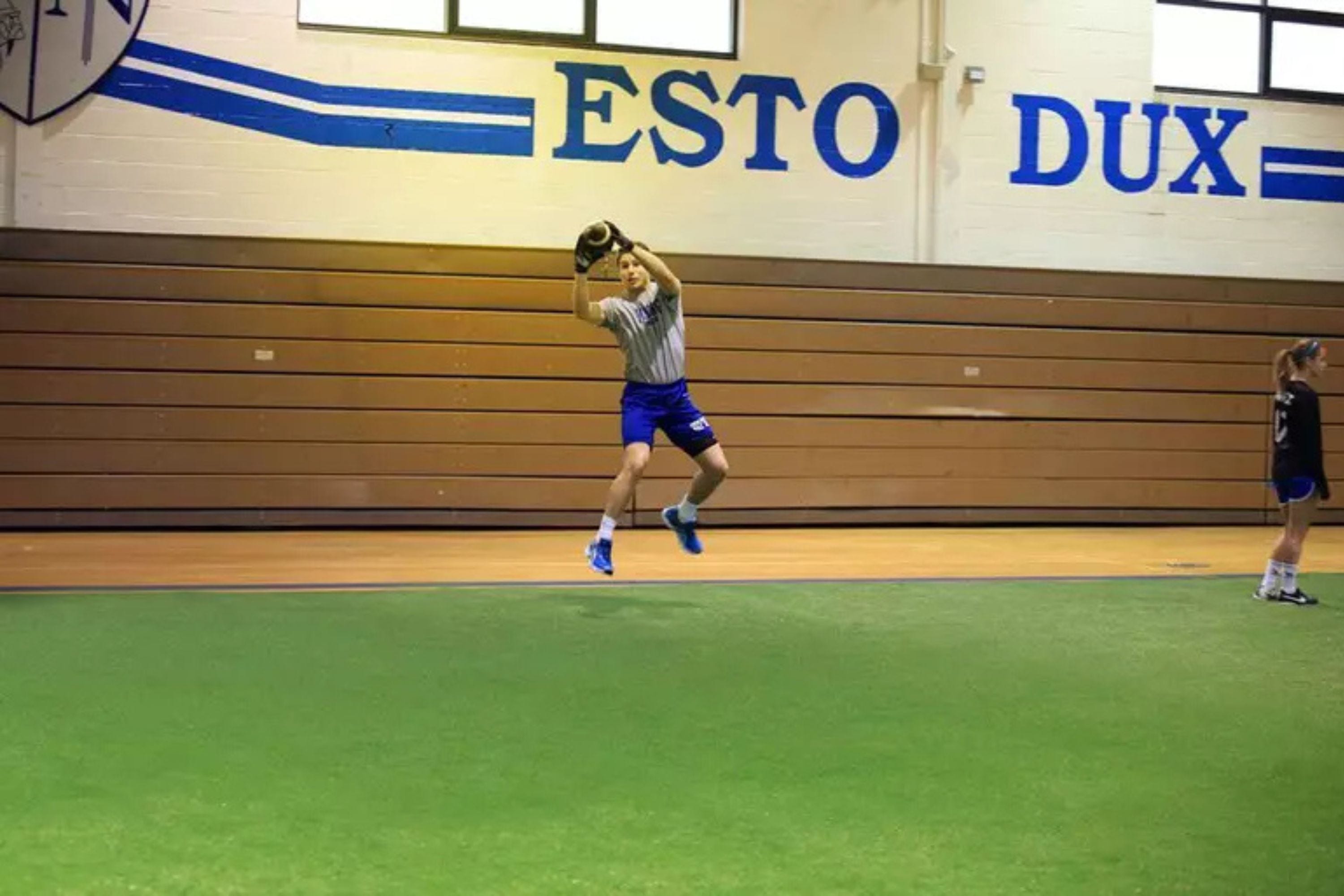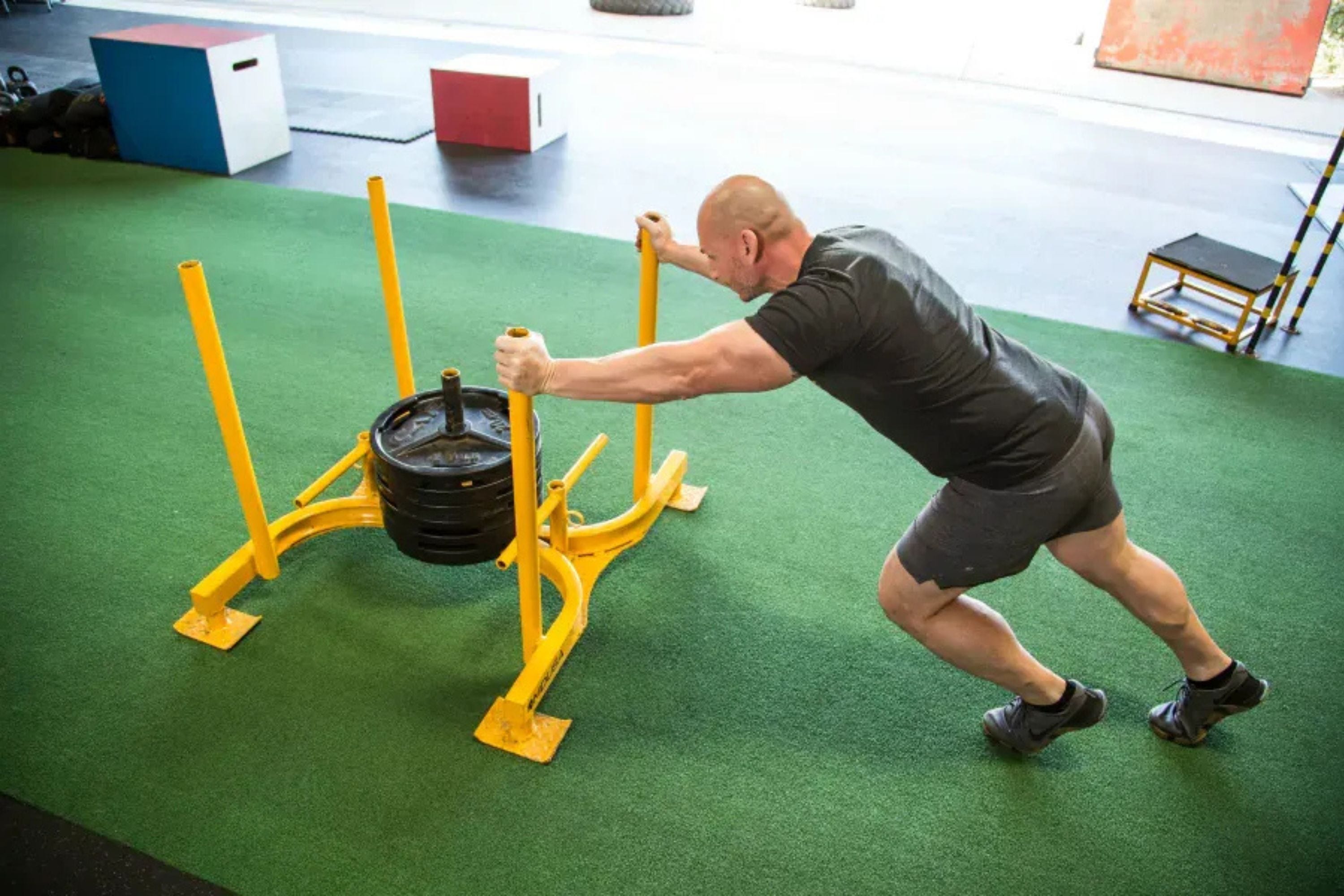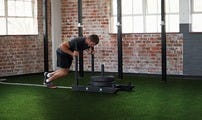
What is Sports and Field Turf?
Sports turf is a specific kind of artificial grass made to withstand the challenges of sports traffic. It can be used indoors or outdoors, and it provides the optimal surface for safety and traction. Sports turf is non-abrasive and provides the traction athletes need to make quick movements without injuring themselves.
Keep sports going all year round in your community with indoor soccer, lacrosse, or field hockey. Sports turf can withstand plenty of wear and tear, even from spikes! Sports turf floors can also be taken outside. Many of our turf products have been used as flooring in batting cages, baseball dugouts, Bocce courts, putting greens, and mini-golf areas.
What is Gym Turf?
Gym turf is a durable and long-lasting artificial grass that is perfect for pulling or pushing sleds, completing your CrossFit WOD or performing HIIT workouts. While its sound-absorbing qualities make it perfect for weight lifting and high-intensity work, the softness of the artificial grass provides an inviting space for your yoga mat. Take advantage of the flat, cushioned surface for body-weight work and stretching.
Training for a 5k or warrior dash? Many runners practice speedwork on grass because of the lower impact. If bad weather hits, take your workout inside while still getting the safety benefits of grass. Gym turf products make a great surface for speed and agility training because they’re made to absorb impact, helping to prevent athletic injuries.
About Gym & Sports Turf
Okay, so you’re ready to up your fitness game with gym turf, but how do you know what to look for in a product? The most important factors to consider are the turf’s face weight, pile height and thickness.
Face Weight
Artificial grass products have a face weight – the amount of material used in your turf per square yard. This is one of the most important factors when choosing the right gym or sports turf. Essentially the higher the face weight, the more durable the product.
If your gym or sports field sees a lot of traffic throughout the day, make sure to get a product with a higher face weight. We offer face weights from 5-90 oz. Be leary of any artificial turf products you see with a face weight over 90, as companies have been known to include the backing to show a higher number. We offer full documentation and free samples, so you can see and feel the difference for yourself.
Pile Height and Thickness
Pile height and thickness are important factors to consider for your floor’s functionality. Choose the wrong product and you might see people in the gym tripping and falling, losing any confidence they just gained from all that practice.
For gyms, fill your space with a turf that has a low pile so your athletes can push a sled across without destroying your floor. The low pile height also keeps a nice appearance for the turf. When considering a product’s thickness, consider the other flooring being used in your gym as well. Uneven surfaces can lead to missteps and falls. Gym turf rolls can also come with attached padding, which adds some height to your floor while providing comfort underfoot.
For sports fields, choose a pile high enough to offer optimal traction for athletes who will be running, tackling, and making fast cuts across the surface. Sports fields contain lots of rubber infill to protect athletes with more spring and cushioning, so the pile height has to be high to contain the optimal amount of infill.
Gym & Sports Turf Installation
Gym and sports turf offers a DIY-friendly installation. All you need are a few accessories and you’re ready to install. Don’t worry, indoor installation isn’t especially daunting. You’ll be ready to get your sweat on soon after installation.
Glue Down Installation
- Make sure your surface is level, clean and dry.
- Dry lay your turf to implement roll sequencing to minimize normal variations.
- Apply adhesive or double-sided tape, then lay the turf.
- Apply a bead of seam sealer to all seams.
- Roll the product with a 75 lb. weighted roller across the width and length of the product surface.
- The installation must remain in dry conditions for 72 hours so the adhesive can cure properly.'
- Sweat on it!
Turf Tile Installation
- First, clean your sub floor so it is free of all dirt, grease or debris.
- Plan your installation with chalk lines.
- Create chalk lines in the center of the room, and begin laying the interlocking tiles along the lines, snapping the locks together as you go.
- Leave the perimeter of the room open until the turf is installed.
- After the turf is laid, go back and cut in tiles along the walls in the room. It is recommended to leave a gap along the wall roughly the thickness of the tiles being used to account for expansion and contraction of the floor in varied temperature ranges.
- If needed, use double-sided mat tape to keep the tile secure.
Installation Accessories
✅ Turf adhesive: Our turf seam tape is an alternative to using staples at the seams. You apply glue to the tape and then stick the turf over it.]
✅ Seam tape: We also carry turf seam tape, which already comes with adhesive on one side. You just have to peel off the backing and apply the tape. Easy peasy!
✅ Turf staples and nails: Nails hold the edges of the turf down, whereas staples hold the turf seams together.
✅ Infill: Adding infill is the last step in the installation process. Infill is used to weigh down the turf and create a more natural look by making the blades stand up straight. It also helps with mitigating heat, absorbing impact, and improving the drainage of your turf in outdoor applications.
Gym and Sports Turf Maintenance
Artificial grass is a low-maintenance alternative to conventional grass. Easy to clean and maintain, sports turf is an attractive element in your gym that you don’t have to work hard to upkeep.
To take care of indoor gym turf, you can treat it like regular carpet for the most part. Vacuum it to remove dust and dirt, and disinfect and deodorize after workouts by using a carpet cleaning solution.
For any stains to the artificial grass, use a warm-water solution of household detergent and water, or a mixture of white distilled vinegar in an equal amount of water.
Maintaining outdoor sports and field turf is even easier! You can hose it down if it gets dirty or muddy. If the blades start to look flattened, you can “bloom” the turf by raking it and adding infill if any is lost or washed away.
Gym Turf Options
Shock Turf X gym turf is a premium workout surface for home or commercial use. The 5mm foam backing which adds extra bounce and cushion to any high impact workout. This turf was made with heavy use in mind and is perfect for pushing and pulling sleds and for dropping heavy weights.
Pros:
✅ Perfect for both home and commercial use.
✅ High traction and sled resiliency.
✅ For indoor and outdoor use.
✅ Up to 10% cooler when installed outdoors compared to turf with rubber infill.
Cons:
✅ Not perforated, so may not drain properly if used outside
✅ Longer fibers show the lane lines where a sled has been used
Our Launch performance turf requires no infill and provides an ideal surface for indoor applications from putting greens to batting cages. The foam cushion backing provides shock absorption and thermal insulation, so it can perform in high traffic areas. The turf itself is made from a polypropylene fiber, which is softer than nylon and highly UV stable.
Pros:
✅ Can be used indoors and out
✅ Pet friendly
✅ Foam cushion backing
Cons:
✅ Can be abrasive when doing floor exercises
Sports Turf Options
Our Sports Play Turf Rolls enhance the safety of athletes playing sports by offering the optimal traction for a wide range of sports. Made from polyethylene fiber, these turf rolls are designed to endure heavy traffic from soft cleats, so you know it will still look great even after lots of use. Maintenance is also very simple, requiring no mowing or watering to maintain a fresh, green appearance.
Pros:
✅ Great for football, soccer, field hockey, and more
✅ Cleat Friendly
✅ Contains no lead or heavy materials
Cons:
✅ Can get hot when used outdoors
This turf is very easy to install and maintain and comes with a 10-year warranty. It’s also free of lead and heavy metals, so you don’t have to worry about adverse health effects.
You have a choice of buying this turf with a foam backing, which provides added comfort underfoot and also provides further stability and shock absorption. The padded version is recommended for indoor use only because the padding is not designed for drainage. However, you can use the non-padded version both indoors and outdoors.
Pros:
✅ Cleat safe
✅ Great for indoor and outdoor use
✅ Contains no lead or heavy materials
Cons:
✅ The cushion is perforated for drainage, so you can't use it outdoors
Pros and Cons of Sports and Gym Turf
Still wondering if sports turf is for you? Read up on these pros and cons.
Pros of Turf:
- Versatile: Gym and sports turf work great for at-home gyms, indoor sports arenas, CrossFit studios, workout facilities, and football fields.
- Low-maintenance: Save the money and time you would spend on maintaining real grass.
- Appearance: Artificial grass gives your gym or sports field a modern look, and it will never have patchy spots. Plus, you can customize the colors!
- Traction and cushion: Artificial turf provides a safe surface that is easier on the joints, allowing athletes to push it to the max with less risk of injury.
Cons of Turf
- Installation: It’s not impossible to install gym and sports turf yourself, but most of the time it’s easier to hire a professional.
- Temperature: Outdoor artificial turf will get warmer than natural grass in direct sunlight. If you’re installing sports turf outdoors, use Hydrochill, our non-toxic infill that helps keep your turf cool under the sun.
Gym and Sports Turf FAQs
Q: Is sports turf toxic?
A: Artificial turf is made from non-toxic plastics and nylon, and it has no adverse health effects. In the past, people have been concerned about the chemicals in rubber infill used for sports turf. However, there have been dozens of studies relating to whether or not synthetic turf with rubber infill can cause cancer. After decades of research, no links have been found.
Q: What is the best infill for sports turf?
A: Crumb rubber infill is the most popular option for sports turf. This is because it absorbs impacts and adds more bounce to the field, preventing injuries. Crumb rubber is made from recycled tires, so it’s inexpensive and will last for years with little to no maintenance required. It is often referred to as SBR Rubber (styrene-butadiene rubber) and it’s usually black.
Q: Why do gyms have turf?
A: Gym turf is used for a lot of popular workouts including CrossFit because it provides optimal traction and impact absorption. You can use gym turf for HIIT workouts, sled pulls, and plyometrics. It reduces the strain on your joints and creates a safer space for high-impact workouts. All in all, turf is the perfect flooring for gyms.
Q: How do you clean gym turf?
A: To clean artificial turf in your gym, start by vacuuming it like you would any ordinary carpet. To remove stains from gym turf, scrub the stain areas with a sponge and soapy water until it fades. If you need to sanitize and disinfect artificial turf, you can use a carpet cleaner and deodorizer, which will get rid of germs, mold, and mildew.
Q: Is it bad to wear cleats on turf?
A: You can wear cleats on artificial sports turf without damaging it. It can handle soccer shoes and football cleats without the cleats tearing it up. Cleat-safe turf is densely packed with shorter fibers for better traction and more durability.
Please Note: Some turf can handle all cleats, and some can only handle soft cleats. Check with the manufacturer to determine what cleats are best to use with the turf.
Other Helpful Gym and Turf Content
So what’s the difference between gym turf and sports turf? Many times, the main difference is that sports turf is UV stable, meaning it won’t fade in sunlight, and it is mostly used outdoors. Lots of artificial grass made for sports and exercise is compatible with both indoor and outdoor use and can handle heavy traffic. Still, there can be differences.
To help you avoid being a couch potato, this guide will help you incorporate synthetic turf into your fitness and sports workouts.



